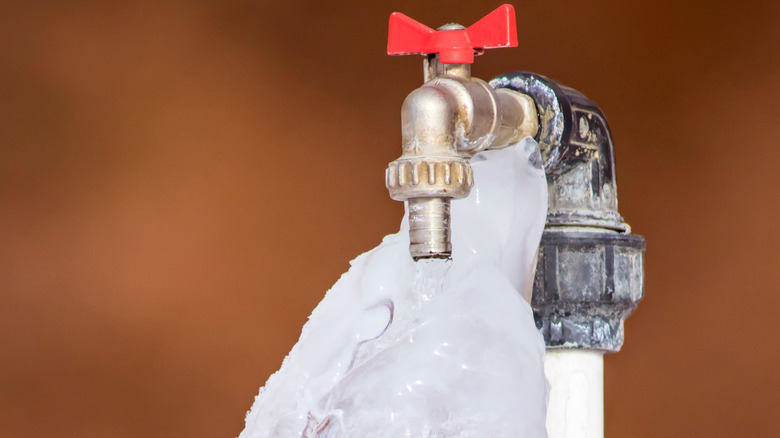On this page in the next paragraphs you can discover a good deal of sensible information relating to Prevent Frozen Pipes .

Cold weather can damage your pipes, particularly by freezing pipes. Right here's how to avoid it from taking place and what to do if it does.
Introduction
As temperature levels decline, the danger of icy pipes increases, possibly causing costly repair work and water damages. Recognizing how to prevent frozen pipelines is vital for homeowners in chilly environments.
Prevention Tips
Protecting susceptible pipelines
Wrap pipes in insulation sleeves or use warmth tape to protect them from freezing temperature levels. Focus on pipes in unheated or external locations of the home.
Heating strategies
Keep indoor areas effectively heated up, particularly locations with pipes. Open up cupboard doors to enable warm air to circulate around pipelines under sinks.
Exactly how to recognize icy pipes
Seek lowered water circulation from faucets, uncommon smells or sounds from pipes, and visible frost on revealed pipes.
Long-Term Solutions
Structural changes
Consider rerouting pipelines away from outside walls or unheated locations. Include additional insulation to attics, cellars, and crawl spaces.
Updating insulation
Purchase high-grade insulation for pipelines, attic rooms, and walls. Appropriate insulation aids keep constant temperature levels and minimizes the risk of icy pipes.
Shielding Outside Plumbing
Garden pipes and exterior taps
Disconnect and drain pipes yard hose pipes prior to winter. Install frost-proof spigots or cover outdoor faucets with protected caps.
Understanding Frozen Pipes
What causes pipes to ice up?
Pipes ice up when exposed to temperature levels listed below 32 ° F (0 ° C) for extended durations. As water inside the pipes freezes, it broadens, putting pressure on the pipeline wall surfaces and possibly triggering them to burst.
Risks and problems
Frozen pipelines can cause water supply disturbances, home damage, and pricey repair work. Burst pipes can flood homes and create considerable structural damage.
Indicators of Frozen Pipes
Identifying frozen pipes early can prevent them from rupturing.
What to Do If Your Pipes Freeze
Immediate activities to take
If you think frozen pipes, maintain taps available to relieve pressure as the ice thaws. Use a hairdryer or towels taken in hot water to thaw pipes slowly.
Final thought
Preventing frozen pipes calls for aggressive procedures and fast feedbacks. By understanding the reasons, indications, and safety nets, house owners can shield their plumbing throughout winter.
6 Proven Ways to Prevent Frozen Pipes and Protect Your Home
Disconnect and Drain Garden Hoses
Before winter arrives, start by disconnecting your garden hoses and draining any remaining water. Close the shut-off valves that supply outdoor hose bibs and leave the outdoor faucet open to allow any residual water to drain. For extra protection, consider using faucet covers throughout the colder months. It’s also important to drain water from any sprinkler supply lines following the manufacturer’s directions.
Insulate Exposed Pipes
Insulating your pipes is an effective way to prevent freezing. Pipe insulation is readily available at home improvement stores and is relatively inexpensive. Pay close attention to pipes in unheated areas such as the attic, basement, crawl spaces, or garage. Apply foam insulation generously to create a buffer against the cold. You can also wrap your pipes in heat tape or thermostat-controlled heat cables for added warmth.
Seal Air Leaks
Inspect your home for any cracks or openings that could let in cold air. Seal any holes around the piping in interior or exterior walls, as well as the sill plates where your home rests on its foundation. Additionally, make sure to keep your garage door closed unless you’re entering or exiting. Leaving it open creates a significant air leak that can lead to frozen pipes.
Allow Warm Air Circulation
During cold snaps, it’s essential to allow warm air to circulate evenly throughout your home. Leave interior doors ajar to promote better airflow. Open kitchen and bathroom cabinets to help distribute heat consistently around the rooms. If you have small children or pets, be sure to remove any household chemicals or potentially harmful cleaners from open cabinets for safety.
Let Faucets Drip
A small trickle of water can make a big difference in preventing ice formation inside your pipes. When temperatures drop significantly, start a drip of water from all faucets served by exposed pipes. This continuous flow helps prevent the water from freezing. Additionally, running a few faucets slightly can relieve pressure inside the pipes, reducing the chances of a rupture if the water inside does freeze.
https://choateshvac.com/6-proven-ways-to-prevent-frozen-pipes-and-protect-your-home/

We had been made aware of that write-up about Preventing and dealing with frozen pipes through someone on a different web blog. Sharing is nice. You just don't know, you might be doing someone a favor. Thank you for being here. Please stop by our website back soon.
This Resource